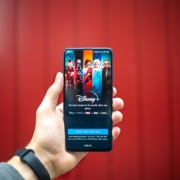Taco Bell and Chipotle Know That Relevant Differentiation is Essential
Several years ago, Restaurant News, an industry trade press, told us that the latest, greatest new trend in restaurants was Mediterranean food. From Italian to Greek, to Turkish to Lebanese food, Mediterranean restaurants were the next big thing on the radar. Not all of these concepts took off. There was a lot of overlap in menu offerings. Falafel anyone?
Recently, Restaurant News focused on taco restaurants, eight up-and-comers. Apparently, tacos have become our anytime food, for everyone food, with tastes and flavors from everywhere foods. These new taco restaurant concepts want to claim a spot in the yet-to-be-solidified space somewhere next to Taco Bell and Chipotle but slightly more upscale, with full bars and service. As one taco restauranteur stated, the Tex-Mex field is wide open.
Do Taco Bell and Chipotle need to worry?
Being aware of competitive entries at any level is strategically smart. But, critically, it is necessary to know the brand’s market focus: the brand’s target audience, the brand’s special benefits and rewards, the brand’s personality, the context (how, when, where) for the brand, the permission to believe the brand claim and its competitive set.
Taco Bell and Chipotle are powerful brands not just because of the food they create and serve, but because each brand knows its brand promise and its market focus. No one expects food from Taco Bell to be crafted on site. But, customers do expect innovative products with out-of-the-box flavors. Chipotle makes its foods on site. There are no freezers. That guacamole or rice that you like is made on premises. Unlike Taco Bell, the Chipotle experience is not focused on delivering seventy different offerings a year. Chipotle focuses on its Food With Integrity promise.
Spend time reading The New Yorker article on Taco Bell and you will understand that no matter what goes on in the innovation center, the brand is front and center. The question is not, “Is this a great, new flavor or design?” The question is always, “Is this a great new Taco Bell flavor or design?”
These eight growing taco brands are described as being flavor bombs. But, exceptional tastes and flavors are features that support the brand’s expected benefits and rewards.
What is troubling about the eight new taco concepts highlighted by Restaurant News is their lack of strategic focus. The articles are all about the flavors and the store designs. But, when it comes to the market focus and the brands’ relevant differentiations, the brands all seem to be alike.
Relevance is critical for brand health. Relevance is a key driver of purchase intent. Relevance means the brand-business is up-to-date and current in customers’ minds. Relevance means the brand-business is seen to be addressing current customer needs and/or solving customer problems. Relevance, along with differentiation, is necessary for defining brand-business value. Customers ask, “Is the branded experience I receive or expect to receive relevant and differentiated relative to other brands?”
Relevant differentiation means knowing the prime prospect, knowing their problems and needs and the occasions in which they have these needs and problems, and having a well-defined, compelling brand-business promise. The brand promise is the statement defining the expected experience that the brand-business will deliver time and again.
Relevant differentiation has some rules.
First, identify a customer target.
Brands need to have a target customer in mind. Wanting to be a brand-business for everyone is a big thought. But, that strategy can genericize a brand. Even big brands such as McDonald’s identify target audiences. Having a target audience in mind does not mean other customers cannot use your brand. No one is going to stop a customer at the front door because that customer does not fit the target audience description. Focus is clarifying and strategically sound. Also, it is possible to have more than one target audience. McDonald’s has young adults but it also has caregivers with kids.
When a brand says it is for anyone and everyone, that brand tends to be liked by a lot of people but loved by very few. Taco Bell and Chipotle know their target customers. Both brands also know that because of their focus on a specific target audience, the brands will attract like-minded others. Having a tight understanding of the customer is FEDA: a focused enduring differential advantage.
All these new taco brands agree that they want to be something for everyone. As they describe their brands, being something for everyone is more than just having a wide variety of menu items – from traditional proteins to plant proteins – and from tacos to bowls and burritos. Something for everyone also includes pricing. No one should be priced out of the restaurant. So, even with full service and a bar, there are entry level tacos.
Second, identify the relevant differentiated benefits and rewards.
It is easy to think that a brand-business’ features are its benefits. This is incorrect. Features are support for benefits and rewards. To have a clear, compelling brand-business promise, know the functional benefits and emotional and social rewards the brand delivers to users. Tastes are important. This is food, after all. No one wants food that does not taste good or does not excite on some level. But, tastes are the support for why the customer wants to eat at this restaurant and how eating at this restaurant makes customers feel.
For these new taco concepts, the goal is “tastes and flavors” beyond the standards offered by Taco Bell and Chipotle. The flavor profiles are global or specific to a Mexican region not yet explored by other Tex-Mex establishments. The idea is to be either globally inspired or as one restaurant states, Taco Bell on steroids.
In the descriptions of the new taco restaurants, there is no insight as to how tastes and flavors support the benefits and rewards, nor any understanding of exactly what these benefits and rewards are exactly.
Third, have a customer-based view of the marketplace.
Let the customers’ needs, problems and unmet needs create the competitive set. Do these new taco restaurants see each other as the competition? Or do they see Taco Bell and/or Chipotle as the competition. Understanding the brand-business’ customer-perceived perception may surprise.
This is especially important when attempting to define the particular market segment in which you believe your brand-business will win. Based on the comments from the creators of these new taco brands, the market segment is ill-defined. Is this Taco Bell with full service and a bar? Is this Chipotle but more inclusive? Is this non-traditional tacos?
Fourth, use the Brand Pyramid construct to generate your brand-business promise.
The Brand Pyramid construct is really simple. It has five levels.
At the bottom level are the brand-business features that provide the credible support for the brand’s claims. These features are essentially the evidence of the truth of the brand’s promise. Taste, price, variety, décor are features.
The second level are the brand-business’ functional benefits. These are the things that the brand does for the customer. For example, because the restaurant offers new and unusual tastes, this taco restaurant opens up my perspective on international foods.
The third level are the brand-business’ emotional and social rewards. These are how the customer feels when the brand delivers its functional benefits. So, when the restaurant helps me to open up my perspective on international foods, I feel less provincial. With my international perspective, I gain status within my group of friends.
Fourth level, Customer values.
What are the values of the target customer in terms of lifestyle, attitudes, beliefs, opinions, interests? Who are these people and what do they hold dear? To whom am I focusing my brand-business? What do I know about my prime prospect?
Fifth, Brand personality.
What is the personality of the brand-business that differentiates in the mind of the target customers and makes the brand-business so personally appealing? If this brand-business were a person, who would it be?
Generating a brand promise from the Brand Pyramid is a creative challenge but it has the pyramid as its frame of reference. Specifically, use this template: For people with these values… Who seek these rewards… Our brand-business with this personality… Is best at providing these benefits… Because it has these features.
For these growing taco brands to actually win in today’s increasingly competitive and grueling marketplace, there are some key Do Not Do’s.
Do not genericize.
Being generic, offering generic category benefit leads to becoming a commodity product with no relevant differentiation. When you stand for everything and everyone general, you stand for nothing.
Do not maintain a mass market mentality.
Mass marketing is death-wish marketing. Mass marketing leads to genericization.
Do not confuse features with benefits.
Describing the interior design as differentiated is good. But interior design is a feature. As are tastes and flavors. Focus on what benefits and rewards the.se features deliver
As Restaurant News points out, these taco establishments have grown exponentially. Some started as a food truck and now have stores across multiple states. Yet, it is more important than ever to focus on who the brand-business is for, why these people want to use this restaurant and how, when and where they use it. There is a difference between growth, profitable growth and enduring profitable growth. Enduring profitable growth can only happen is the brand-business creates a compelling brand promise and does everything possible to be relevantly differentiated relative to its competitors.










